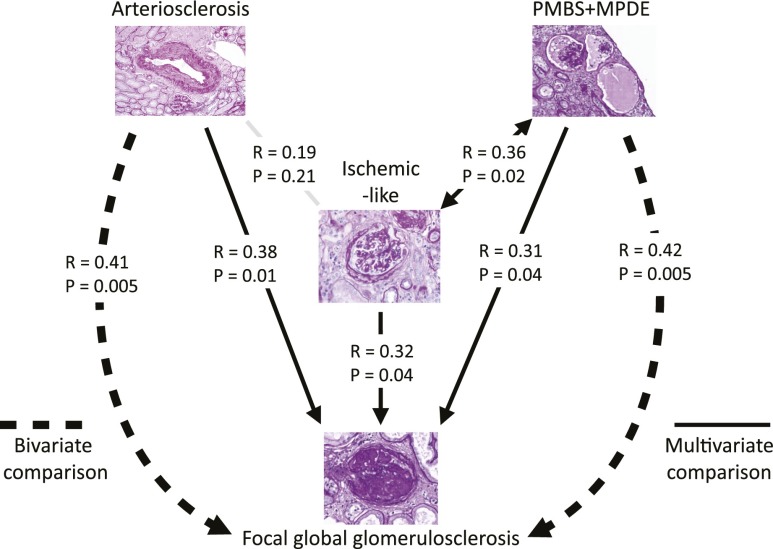Figure 10.
Multivariate regression analysis shows that ischemic-like glomeruli correlate with podocyte detachment events but not arteriosclerosis. PAS-stained sections from 44 nephrectomies (average age, 71.1±6.9 years) containing 8570 glomerular profiles were scored for glomeruli with FGGS (average, 9.5%±7.9%), PMBS (average, 1.0%±1.3%), MPDEs containing at least three cells in the Bowman space (0.2%±0.6%), ischemic-like glomerular tufts (average, 2.8%±3.7%), and arteriosclerosis score (average, 2.4±1.0; range, 0–5). Partial correlation coefficients with the corresponding P values are shown where the net relationship between two variables is a product of multivariate linear regression model after adjustment with the effect of other covariates. Note that podocyte stress/detachment events (PMBS+MPDE) correlated with ischemic-like lesions (P=0.02) while arteriosclerosis did not (P=0.21). This finding suggests that the ischemic-like lesions are not directly related to arteriosclerosis. However, all three variables (arteriosclerosis, ischemic-like lesions, and podocyte stress/detachment) independently correlated with FGGS. Bivariate comparison correlating arteriosclerosis or podocyte detachment events with FGGS showed independent correlations of approximately equal weight (R=0.4; P<0.01). This result suggests that arteriosclerosis-associated processes can independently amplify the rate of development of FGGS being caused by other mechanisms (e.g., podocyte depletion) or cause FGGS by different de novo mechanisms.

